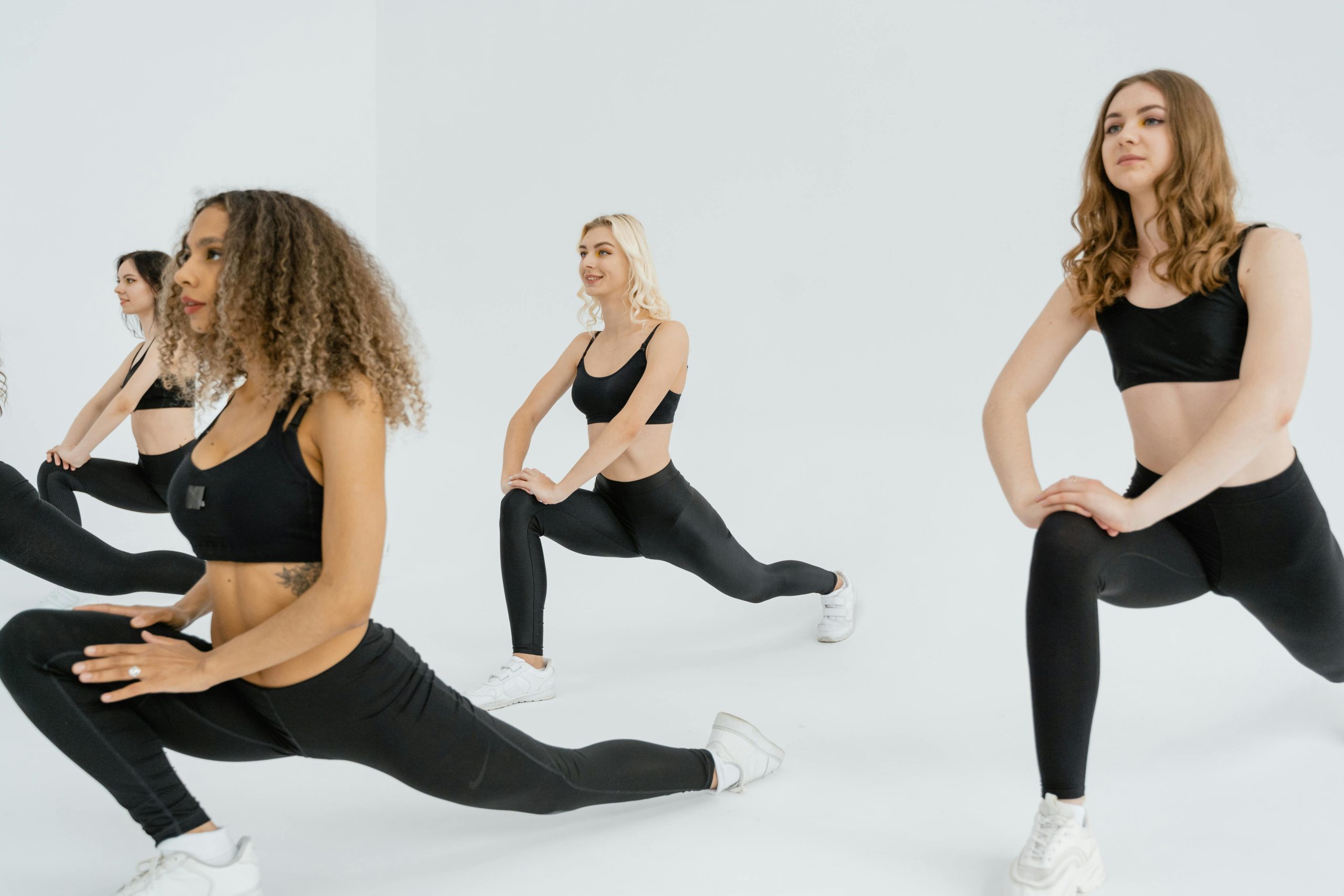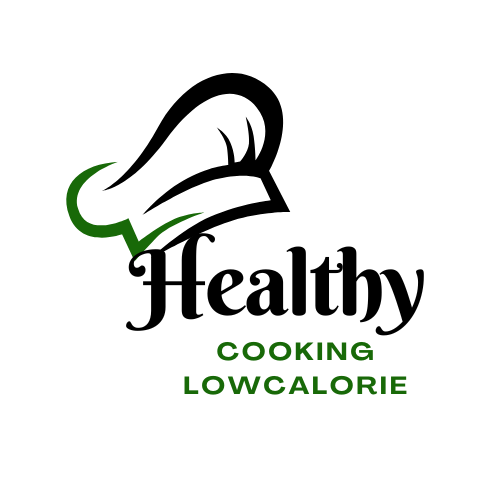A low-calorie diet alone may help with weight loss, but without the best exercises to pair with a low-calorie diet, it can lead to muscle loss, metabolic slowdown, and lower energy levels.
✔ The goal isn’t just weight loss—it’s fat loss.
✔ Muscle is essential for a strong metabolism and long-term weight maintenance.
✔ Not all workouts are effective on a low-calorie diet. Some can lead to overtraining, exhaustion, and increased stress hormones.
📌 In this guide, you’ll learn:
✅ The best exercises for fat loss and muscle preservation
✅ Workout routines for different age groups (seniors, parents, beginners)
✅ How to prevent overtraining and maximize results on fewer calories
👉 Need a full workout plan? Download our FREE Low-Calorie Workout Guide with step-by-step exercise routines tailored for your needs!
The Science Behind Exercise & a Low-Calorie Diet

🔹 Why Exercise is Essential for Fat Loss (Not Just Weight Loss)
Most people believe that cutting calories alone is enough for weight loss, but without proper exercise, up to 25% of weight lost can come from muscle instead of fat.
✔ Preserves Lean Muscle: Strength training prevents muscle breakdown when calories are reduced.
✔ Increases Caloric Burn: HIIT and resistance training raise post-exercise calorie burn (EPOC effect).
✔ Prevents Metabolic Slowdown: Maintaining muscle keeps your metabolism high.
✔ Supports Long-Term Weight Maintenance: Regular exercise makes it easier to keep weight off permanently.
🔬 Science Insight: A study in The American Journal of Physiology found that resistance training preserves lean muscle while dieting, whereas cardio-only plans often lead to muscle loss.
📌 Quick Tip: Pairing strength training + low-impact cardio is the best combination for fat loss without muscle depletion.
Best Exercises to Pair with a Low-Calorie Diet

1️⃣ Strength Training (The Foundation of Fat Loss Without Muscle Loss)
✅ Why It’s Important:
✔ Prevents muscle loss while dieting.
✔ Burns more calories over time due to increased muscle mass.
✔ Improves strength and functional movement.
📌 Recommended Strength Training Routine (3-4x per week):
Workout Plan:
1️⃣ Squats (3 sets x 12 reps) – Works legs, glutes, and core.
2️⃣ Push-ups or Dumbbell Press (3 x 10-12 reps) – Builds upper body strength.
3️⃣ Deadlifts (3 x 8-10 reps) – Engages full body, preventing muscle loss.
4️⃣ Plank Holds (3 x 30 sec) – Core stabilization for better posture and balance.
How to Perform These Exercises (Step-by-Step)
📌 Squats:
1️⃣ Stand with feet shoulder-width apart.
2️⃣ Lower your hips as if sitting in a chair, keeping knees behind toes.
3️⃣ Push through your heels to return to standing.
📌 Push-Ups:
1️⃣ Start in a plank position, hands slightly wider than shoulders.
2️⃣ Lower your chest until your elbows reach a 90-degree angle.
3️⃣ Push back up to the starting position.
📌 Deadlifts:
1️⃣ Stand with feet hip-width apart, holding dumbbells or a barbell.
2️⃣ Hinge at the hips and lower the weights toward the ground.
3️⃣ Keep your back straight and engage your core as you return to standing.
🔬 Science Insight: Studies show that lifting weights while in a calorie deficit helps retain 85-90% of muscle mass compared to cardio-only routines.
📌 Tip: Use progressive overload (increase weight or reps over time) to maintain muscle while cutting calories.
2️⃣ High-Intensity Interval Training (HIIT) for Fat Loss
✅ Why It’s Effective:
✔ Burns fat faster than steady-state cardio.
✔ Keeps metabolism elevated for hours after exercise.
✔ Short workouts deliver maximum results in less time.
📌 Sample 20-Minute HIIT Routine (3-4x per week):
Workout Plan:
1️⃣ Jump Squats (40 sec), Rest (20 sec)
2️⃣ Mountain Climbers (40 sec), Rest (20 sec)
3️⃣ Kettlebell Swings (40 sec), Rest (20 sec)
4️⃣ Burpees (40 sec), Rest (20 sec)
5️⃣ Repeat 3 rounds
How to Perform These Exercises (Step-by-Step)
📌 Jump Squats:
1️⃣ Stand with feet hip-width apart.
2️⃣ Lower into a squat, then explode upwards into a jump.
3️⃣ Land softly and repeat.
📌 Mountain Climbers:
1️⃣ Start in a high plank position.
2️⃣ Drive one knee toward your chest, then quickly switch legs.
3️⃣ Continue alternating at a fast pace.
📌 Kettlebell Swings:
1️⃣ Stand with feet wider than shoulder-width apart, holding a kettlebell.
2️⃣ Hinge at the hips and swing the kettlebell forward using momentum, not arms.
3️⃣ Let it drop back down and repeat.
🔬 Science Insight: Research in Obesity Reviews found that HIIT burns 25-30% more fat than steady-state cardio, making it ideal for fat loss on a low-calorie diet.
📌 Tip: Keep HIIT sessions under 30 minutes to prevent excess cortisol buildup (which can lead to muscle loss).
3️⃣ Low-Impact Cardio (For Recovery & Fat Burning Without Overtraining)
✅ Why It’s Beneficial:
✔ Helps burn extra calories without stressing the body.
✔ Improves heart health & endurance.
✔ Ideal for seniors & beginners who need joint-friendly exercise options.
📌 Best Low-Impact Cardio Choices:
✔ Walking (30-45 minutes, 4-5x per week)
✔ Swimming (20-30 minutes, 3x per week)
✔ Cycling or Elliptical (30 minutes, 3x per week)
🔬 Science Insight: A study in The Journal of Sports Medicine found that low-intensity steady-state (LISS) cardio is ideal for fat loss without muscle breakdown.
📌 Tip: Perform LISS cardio after strength training for maximum fat burn.
Customized Workout Routines for Different Age Groups

📌 Not all workouts are suitable for everyone. Fitness levels, age, and lifestyle factors determine which exercises will be most effective while dieting. Below are customized routines based on different needs, ensuring safe and efficient fat loss without muscle loss.
🔹 Best Exercises for Seniors (Low-Impact, Muscle-Preserving)
📌 Focus: Strength, mobility, and endurance without joint strain.
Why Strength Training Matters for Seniors:
✔ Prevents muscle loss and osteoporosis.
✔ Improves balance and reduces fall risk.
✔ Maintains independence and mobility.
📌 Recommended Workout Routine (3x per week):
Workout Plan:
1️⃣ Seated Leg Raises (3 sets x 15 reps) – Strengthens lower body muscles.
2️⃣ Chair Squats (3 x 10 reps) – Builds lower body stability.
3️⃣ Wall Push-Ups (3 x 10 reps) – Enhances upper body strength.
4️⃣ Light Resistance Band Rows (3 x 12 reps) – Supports posture & back strength.
5️⃣ Walking or Swimming (30 min, 3-5x per week) – Maintains cardiovascular health.
How to Perform These Exercises (Step-by-Step)
📌 Seated Leg Raises:
1️⃣ Sit in a sturdy chair with feet flat on the ground.
2️⃣ Extend one leg straight out and hold for 3 seconds.
3️⃣ Lower slowly and switch legs.
📌 Chair Squats:
1️⃣ Stand in front of a chair, feet hip-width apart.
2️⃣ Lower into a squat, briefly sitting on the chair.
3️⃣ Push back up to standing without using hands.
📌 Wall Push-Ups:
1️⃣ Stand facing a wall, arms extended shoulder-width apart.
2️⃣ Lower your chest toward the wall, then push back.
3️⃣ Keep your body in a straight line throughout.
🔬 Science Insight: A study in The Journal of Aging Research found that strength training in seniors reduces muscle loss by up to 40% and improves mobility.
📌 Tip: Seniors should prioritize form & flexibility to prevent injuries.
🔹 Best Exercises for Busy Parents (Quick, Efficient Fat-Burning Routines)
📌 Focus: Short, high-efficiency workouts that fit into a hectic schedule.
Why HIIT & Bodyweight Training Work for Parents:
✔ Requires minimal time and no gym equipment.
✔ Burns maximum calories in short sessions.
✔ Can be done at home while watching kids.
📌 Recommended Workout Routine (20-Minute Fat-Burning Session, 3-4x per week):
Workout Plan:
1️⃣ Jump Squats (30 sec) – Builds lower body strength.
2️⃣ Push-Ups (30 sec) – Strengthens chest & arms.
3️⃣ Plank with Shoulder Taps (30 sec) – Engages core & upper body.
4️⃣ Jump Rope (30 sec) – Boosts cardiovascular fitness.
5️⃣ Repeat for 4 rounds
How to Perform These Exercises (Step-by-Step)
📌 Jump Squats:
1️⃣ Stand with feet shoulder-width apart.
2️⃣ Lower into a squat, then explode into a jump.
3️⃣ Land softly and repeat.
📌 Plank with Shoulder Taps:
1️⃣ Start in a plank position.
2️⃣ Tap your right shoulder with your left hand, then switch.
3️⃣ Keep hips stable to avoid excessive movement.
🔬 Science Insight: Research in The Journal of Strength and Conditioning Research found that HIIT workouts burn 30% more calories than steady-state cardio in the same amount of time.
📌 Tip: Parents should focus on short, high-intensity sessions that require minimal equipment.
🔹 Best Exercises for Beginners (Easy & Safe Routines to Build Strength)
📌 Focus: Gradual strength-building and endurance improvement.
Why Starting Slow is Important:
✔ Prevents injuries & overtraining.
✔ Builds consistency without extreme fatigue.
✔ Increases confidence & strength over time.
📌 Recommended Beginner Workout Routine (3-4x per week):
Workout Plan:
1️⃣ Bodyweight Squats (3 x 12 reps) – Strengthens legs & glutes.
2️⃣ Incline Push-Ups (3 x 10 reps) – Builds upper body strength.
3️⃣ Glute Bridges (3 x 12 reps) – Engages core & lower body.
4️⃣ Brisk Walking (30 min, 3-4x per week) – Improves endurance.
How to Perform These Exercises (Step-by-Step)
📌 Incline Push-Ups:
1️⃣ Place hands on a sturdy elevated surface (bench or table).
2️⃣ Lower your chest toward the surface.
3️⃣ Push back up while keeping your core engaged.
📌 Glute Bridges:
1️⃣ Lie on your back, knees bent, feet flat.
2️⃣ Lift your hips toward the ceiling.
3️⃣ Lower back down and repeat.
🔬 Science Insight: A study in The Journal of Human Kinetics found that beginner-friendly strength training improves metabolism by 15% within 12 weeks.
📌 Tip: Beginners should increase intensity gradually and avoid overexertion.
How to Prevent Overtraining & Maximize Results
✅ The Problem: Overtraining on a low-calorie diet can lead to fatigue, poor recovery, and muscle breakdown.
✅ The Fix: Balance workouts with adequate recovery.
📌 Signs of Overtraining:
✔ Constant fatigue & lack of motivation.
✔ Decreased workout performance.
✔ Increased muscle soreness & injuries.
🔬 Science Insight: Research in The Journal of Strength and Conditioning Research found that overtraining in a calorie deficit leads to muscle breakdown and elevated cortisol levels.
📌 Prevent Overtraining With These Strategies:
✔ Strength train 3-4x per week, not every day.
✔ Prioritize post-workout nutrition (protein + carbs).
✔ Get 7-9 hours of sleep for recovery.
Advanced Fat-Burning Techniques While on a Low-Calorie Diet
For those who want to maximize fat loss without losing muscle, incorporating advanced exercise strategies can help optimize results.
🔹 1️⃣ Metabolic Resistance Training (MRT) for Fat Loss & Strength
✅ Why It Works:
✔ Combines strength and cardio, maximizing calorie burn.
✔ Shortens workout time while increasing post-exercise calorie burn (EPOC effect).
✔ Builds lean muscle while in a calorie deficit.
📌 MRT Routine (3x per week, 30-minute sessions):
1️⃣ Kettlebell Swings (40 sec), Rest (20 sec)
2️⃣ Dumbbell Deadlifts (3 x 10 reps)
3️⃣ Jump Lunges (30 sec), Rest (20 sec)
4️⃣ Medicine Ball Slams (3 x 12 reps)
5️⃣ Repeat for 3-4 rounds
🔬 Science Insight: Research from The Journal of Strength and Conditioning Research found that MRT increases fat oxidation by 20% while preserving muscle mass in calorie-restricted individuals.
📌 Tip: Use weights heavy enough to challenge you, but not so heavy that form is compromised.
🔹 2️⃣ Fasted Cardio vs. Fed Cardio: Which is Best?
✅ What’s the Difference?
✔ Fasted Cardio: Exercising in the morning before eating (burns more stored fat).
✔ Fed Cardio: Exercising after a meal (more energy for high-intensity workouts).
🔬 Science Insight: A study in The British Journal of Nutrition found that fasted cardio increases fat oxidation by 20%, but performance is better with fed cardio.
📌 Best Strategy:
✔ Use fasted cardio for low-intensity workouts (walking, cycling).
✔ Use fed cardio for high-intensity workouts (HIIT, sprinting).
🔹 3️⃣ Combining Cardio & Strength Training for Optimal Fat Loss
✅ Why It Works:
✔ Strength training builds muscle → Muscle burns more calories at rest.
✔ Cardio burns fat efficiently → Helps with weight loss.
📌 Best Weekly Workout Plan for a Low-Calorie Diet:
✔ Day 1: Full-Body Strength Training + 15 min Walking
✔ Day 2: HIIT Cardio (20 min)
✔ Day 3: Strength Training (Upper Body) + 30 min Walking
✔ Day 4: Active Recovery (Yoga, Stretching)
✔ Day 5: Strength Training (Lower Body) + 20 min Cycling
✔ Day 6: HIIT (Sprint Intervals or Jump Rope)
✔ Day 7: Full Rest or Light Walking
🔬 Science Insight: Research in The Journal of Applied Physiology shows that combining cardio and resistance training is the most effective way to lose fat while maintaining muscle on a low-calorie diet.
📌 Tip: Always prioritize strength training before cardio to maintain muscle mass and strength levels.
Common Exercise Mistakes While Dieting (And How to Fix Them)
📌 Many people unknowingly make workout mistakes that slow progress or increase muscle loss. Here’s what to avoid:
❌ 1️⃣ Doing Too Much Cardio & Not Enough Strength Training
✔ Fix: Prioritize resistance training (3-4x per week), with cardio as a supplement.
🔬 Why? Too much cardio can increase muscle breakdown, slowing metabolism.
❌ 2️⃣ Training Every Day Without Recovery
✔ Fix: Include rest days to allow muscles to rebuild and prevent overtraining.
🔬 Why? Recovery helps prevent injuries and maintain long-term fat loss progress.
❌ 3️⃣ Ignoring Protein Intake After Workouts
✔ Fix: Eat at least 20-30g of protein post-workout to aid muscle repair.
🔬 Why? A study in The Journal of Nutrition found that protein consumption within 30 minutes after exercise accelerates muscle recovery and prevents muscle loss.
Final Thoughts: The Best Way to Exercise on a Low-Calorie Diet
✔ Strength training is essential to prevent muscle loss while burning fat.
✔ HIIT workouts maximize calorie burn in minimal time.
✔ Low-impact cardio is great for fat loss without excess stress.
✔ Tailor your workout routine based on your age & lifestyle.
📌 Want a structured fitness plan? Download our FREE Low-Calorie Workout Guide for step-by-step exercise routines customized for your needs!
🎯 Get Your Free Low-Calorie Workout Guide!
📩 Download the FREE Guide, featuring:
✅ Step-by-step fat-burning workout plans
✅ Best strength exercises to prevent muscle loss
✅ Custom routines for seniors, parents, and beginners
📌 Click Here to Get Your Free Guide!
💬 Which workout strategy are you most excited to try? Drop your thoughts in the comments below!
FAQs: Exercising While on a Low-Calorie Diet
✔ 3-4 days of strength training + 2-3 days of cardio is ideal for fat loss without overtraining.
✔ Yes! Strength training helps maintain muscle while dieting. Reduce volume slightly if energy is low.
✔ Depends on the type of workout:
- Low-intensity cardio? Yes, fasted workouts are effective.
- Heavy lifting or HIIT? Better to eat a small meal beforehand.
✔ Prioritize protein intake (at least 1.2g per kg of body weight).
✔ Strength train consistently.
✔ Avoid extreme calorie deficits.
✔ Recommended:
- Protein powder (if struggling to meet protein intake).
- Creatine (helps retain strength while in a deficit).
- Electrolytes (prevents fatigue from sweating & hydration loss).
